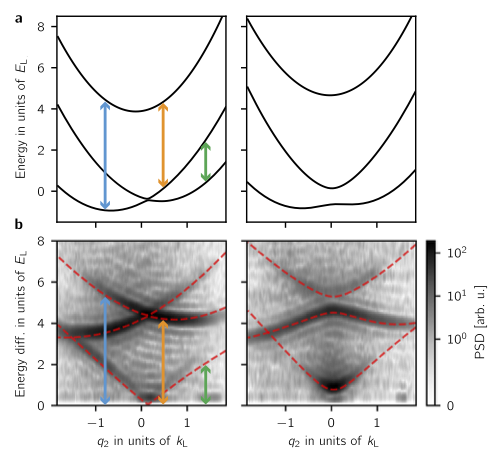Topological features without a lattice in Rashba spin-orbit coupled atoms

Topological order can be found in a wide range of physical systems, from crystalline solids, photonic meta-materials and even atmospheric waves to optomechanic, acoustic and atomic systems. Topological systems are a robust foundation for creating quantized channels for transporting electrical current, light, and atmospheric disturbances. These topological effects are quantified in terms of integer-valued ‘invariants’, such as the Chern number, applicable to the quantum Hall effect, or the Z2 invariant suitable for topological insulators. Here, we report the engineering of Rashba spin-orbit coupling for a cold atomic gas giving non-trivial topology, without the underlying crystalline structure that conventionally yields integer Chern numbers. We validated our procedure by spectroscopically measuring both branches of the Rashba dispersion relation which touch at a single Dirac point. We then measured the quantum geometry underlying the dispersion relation using matter-wave interferometry to implement a form of quantum state tomography, giving a Berry’s phase with magnitude π. This implies that opening a gap at the Dirac point would give two dispersions (bands) each with half-integer Chern number, potentially implying new forms of topological transport.
Topological features without a lattice in Rashba spin-orbit coupled atoms; A. Valdés-Curiel, D. Trypogeorgos, Q.-Y. Liang, R. P. Anderson, and I. B. Spielman; Nature Communications 12 593 (2021). doi:10.1038/s41467-020-20762-4
